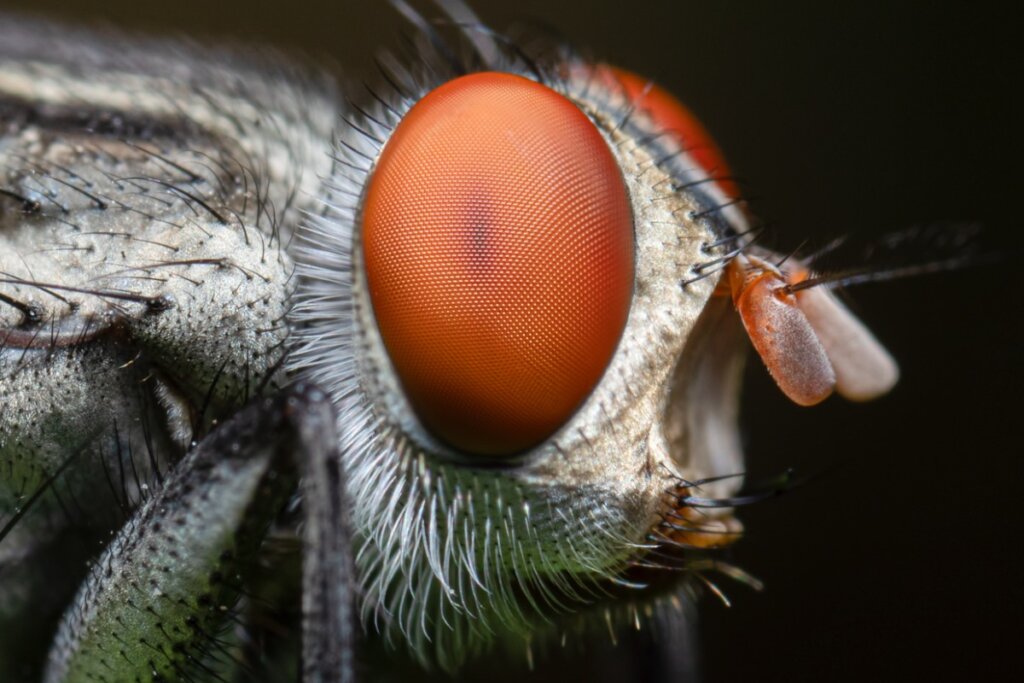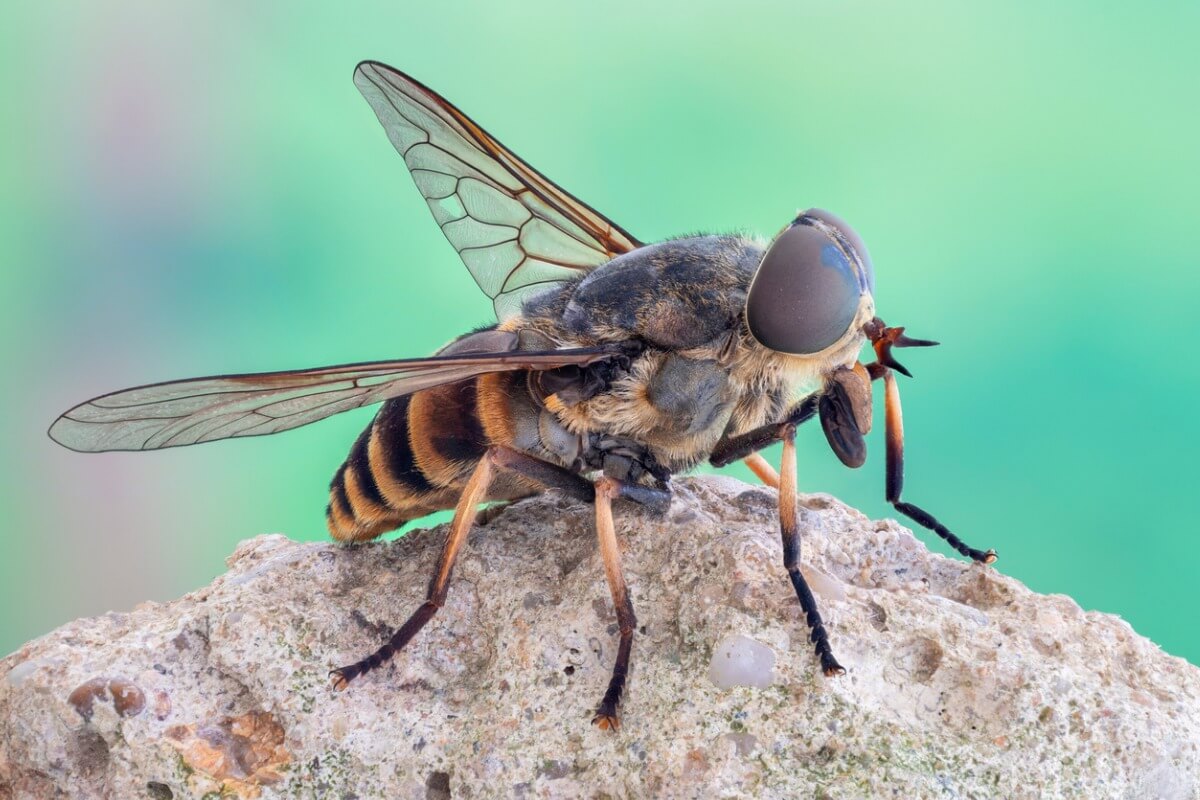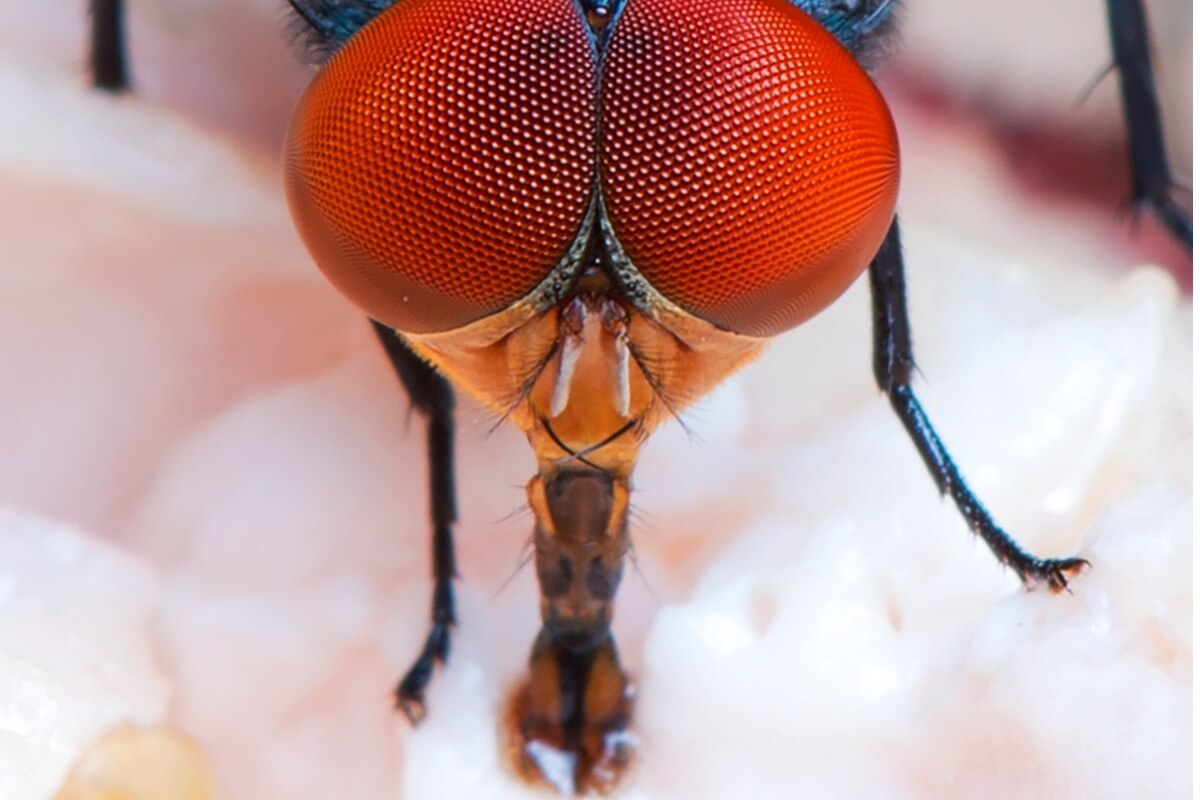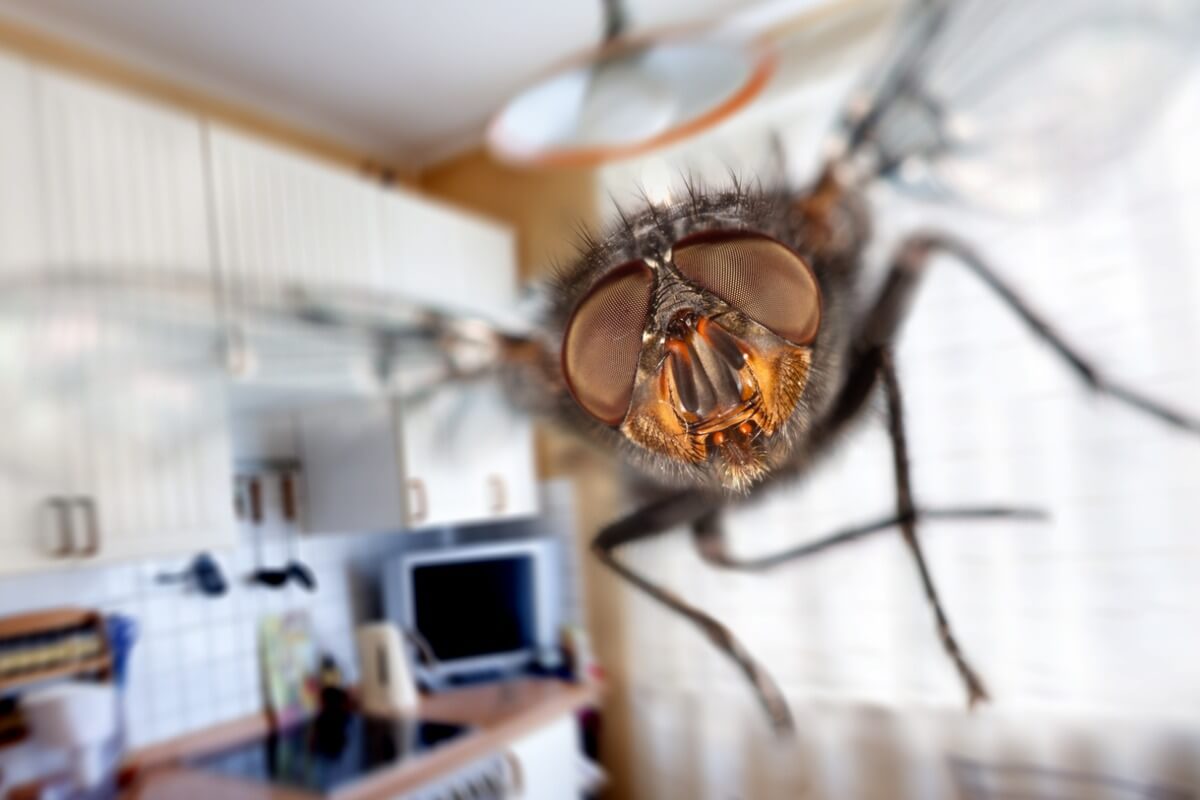10 Curiosities About Flies

Flies are conceived as annoying and dirty creatures. This conception isn’t surprising, as it’s common to see them fluttering around garbage cans and feeding directly on the feces of other animals. Anyway, these Diptera are a lot more fascinating than you may have thought – would you like to learn 10 curiosities about flies?
These small invertebrates are much more fascinating than it first appears: they position themselves expertly in the area while flying, they can taste food with their legs, and they even “perceive time” differently than we do. Next up, we’ll delve into these and other topics regarding flies.
1. There are several different species
When we talk about flies we usually refer to the Musca domestica species, one of the most widespread winged invertebrates in the world. It should be noted that the order Diptera (which includes flies and mosquitoes) contains more than 125,000 different species, including horseflies, hoverflies, and other lesser-known insects.
The order of the Diptera is one of the most varied that exist in the animal kingdom. Despite the large number of species that have been described, it’s estimated that there could be more than 1,000,000 on our planet. Without a doubt, they’re the kings of the air (despite their small size).
2. Tiny and giant sizes
One of the curiosities about flies lies in their morphological variety. Although the best-known species have sizes ranging from 4 to 8 millimeters (up to 1 centimeter), there are much larger and smaller specimens. The lowest record is taken by Euryplatea nanaknihali, a 0.4-millimeter fly that lays its eggs on the heads of certain ants.
On the other hand, Gauromydas heros takes the prize of being the largest fly in the world, with up to 7 centimeters (nearly 3 inches) in length and a diameter of 10 centimeters (4 inches) with open wings. This species is neotropical and is distributed by Brazil, Bolivia and Paraguay.

3. Colonizers of all environments
Flies have colonized every continent in the world except the Antarctic. This is because they’re ectothermic beings and depend on the environment to regulate their internal temperature. Since they can’t generate enough heat on their own, they don’t survive well in permanently frozen ecosystems.
The Musca domestica species inhabits almost all the countries of the world. Colonize rural and urban environments alike.
4. A common body plan
Flies are Diptera, but also insects. Like all members of the Hexapoda group, they have a common body plan: a head with compound eyes and sense organs; a thorax from which 3 pairs of legs and wings sprout; and an abdomen with 11 segments (some fused). This body shape is common for all species of flies.
As indicated by professional sources, Diptera antennae are highly variable between species in both shape and size, which is very useful for their taxonomic classification. On the other hand, the eyes can go from occupying the entire head to being absent in some fly taxa.
5. Modified wings for sensory perception
One of the most interesting curiosities of flies lies in their wing conformation. Many hexapods have 2 pairs of wings (front and rear), but in Diptera the rear ones are modified. These have become 2 special mechanoreceptor organs known as halteres.
The halteres are club-shaped and oscillate in time with the position of the royal wings. At the base of these structures are bell-shaped sensillae and chordotonal organs. Together, all these formations are used by flies to be aware of their orientation and location in space while they fly.
Thanks to the halteres, flies can maneuver excellently and respond quickly to environmental changes.

6. The proboscis: an essential organ for flies
Flies ingest food through the proboscis, a modified oral appliance similar to an elephant’s trunk. The proboscises of the ancestral Diptera were pointed (like those of mosquitoes) and were prepared to penetrate the skin and suck blood. Some species maintain this trait, as is the case with female horseflies (Tabanidae).
Many other flies have “kinder” eating habits, as their proboscis has been modified to suck liquids from surfaces. For example, the common fly has a final lip that allows it to direct the fluid towards the central tube of the food. Thanks to the pseudo tracheas of this structure, the liquid advances to the mouth of the dipteran by capillarity.
7. Not all flies eat garbage
The house fly feeds on whatever organic fluid it finds in the environment, but many other species have specialized diets. For example, tsetse flies (Glossina genus) feed on the blood of mammals, while hoverflies (Syrphidae family) feed on the sugary nectar of flowers.
Hoverflies are extremely important pollinators and are only surpassed in their work by bees. Although the surface of their body is not as hairy and they are not that good at transporting pollen, they make up for it with their abundance. As a curiosity, it should be noted that these Diptera imitate the colors of wasps, thus avoiding being predated (despite not having a stinger).
8. Flies notice flavors without tasting food
Another of the most striking curiosities about flies is that they’re capable of savoring food without tasting it. The taste receptors of these Diptera are found on the lip, pharynx, legs, wing margins, and abdomen. Thus, they’re able to identify whether a surface is edible just by sitting on it.
Females have taste receptors in the final abdominal segment. Thanks to them, they choose the right places to lay their eggs.
9. Do flies see slower than us?
According to professional sources, flies are able to perceive time more “slowly” than we are. It isn’t that they inhabit another plane (the laws of physics are universal), but that, having a reduced size and a much higher metabolic rate, they observe the movements of their environment on a smaller scale.
Due to their high metabolic rate, flies perceive more information in the same unit of time. Therefore, it is as if it “slows down” for them.

10. These animals are fascinating and they don’t deserve to die!
As the last of our curiosities about flies, we want to emphasize that these fascinating beings deserve to live and their bad reputation has no justification. Although they can be a real nuisance in homes during the summer, in reality, these insects serve as food for many small vertebrates (lizards, birds and frogs, among others).
Unfortunately, hematophagous (bloodsucking) species can become a medical problem, as some of them are carriers of serious diseases for humans. Sometimes killing these Diptera pests is the only option to avoid losing lives.
All cited sources were thoroughly reviewed by our team to ensure their quality, reliability, currency, and validity. The bibliography of this article was considered reliable and of academic or scientific accuracy.
- Musca domestica, Animal Diversity Web. Recogido a 15 de septiembre en https://animaldiversity.org/accounts/Musca_domestica/
- Time passes more slowly for flies, study finds, ADW. Recogido a 15 de septiembre en https://www.theguardian.com/science/2013/sep/16/time-passes-slowly-flies-study
- https://scholar.google.es/scholar?hl=es&as_sdt=0%2C5&as_vis=1&q=proboscis+diptera&btnG=#:~:text=Szucsich%2C%20N.%20U.%2C%20%26%20Krenn%2C%20H.%20W.%20(2000).%20Morphology%20and%20function%20of%20the%20proboscis%20in%20Bombyliidae%20(Diptera%2C%20Brachycera)%20and%20implications%20for%20proboscis%20evolution%20in%20Brachycera.%20Zoomorphology%2C%20120(2)%2C%2079-90.
